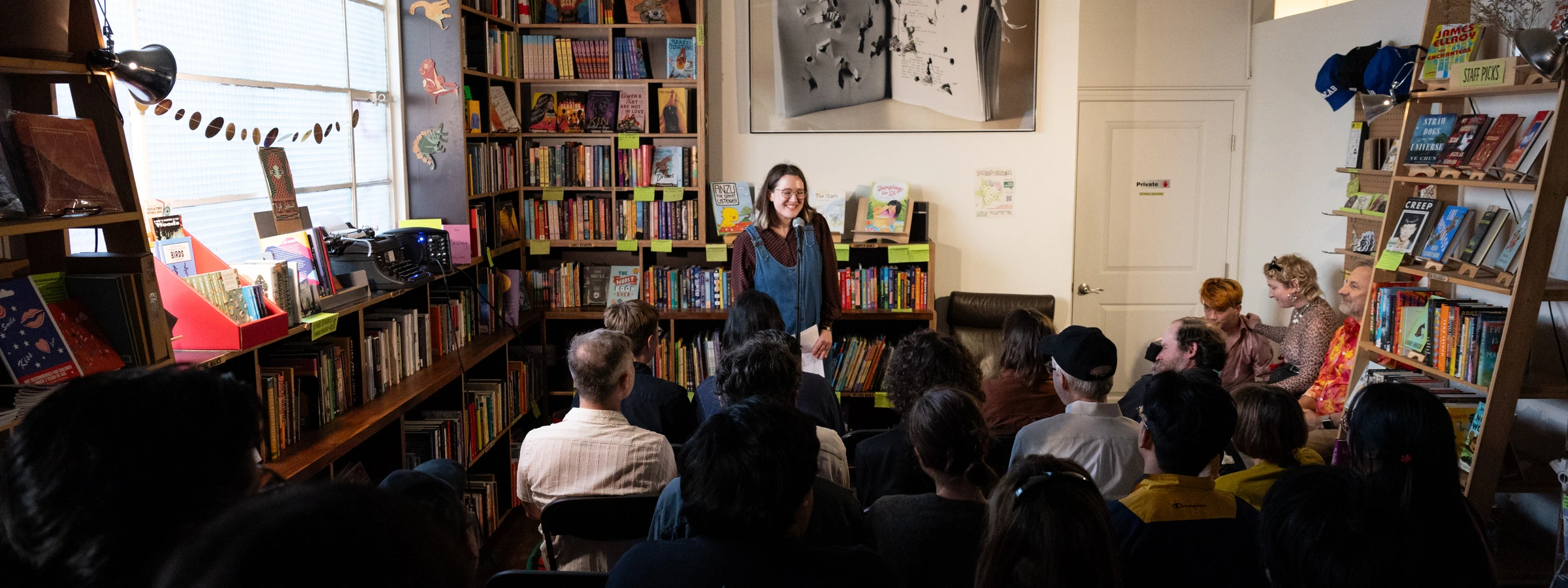The CalArts MFA in Creative Writing combines a dedication to experimental practice with a resolutely non-genre tracking curriculum. These commitments are intertwined: Our MFA program uniquely allows our students to channel ideas through whichever genre the work takes you—including into hybrid genre forms of your own.
Our dedication to a resolutely non-genre-tracking curriculum emerges from CalArts’ foundational commitment to experimentation and interdisciplinarity. Students who come to our program regularly engage in substantial projects in multiple genres across their coursework and beyond. As a Creative Writing MFA student, you’ll design your own path through our curriculum, invoking questions of genre and practice to inform your work as it develops. This structure gives special import to the work you create, with guidance and support from your faculty mentor, other faculty, and peers throughout your time in the program. Meeting with your mentor multiple times each semester, you’ll discuss your plan of study, creative work, and larger questions related to a life in writing and the interconnectedness of writing, other art forms, and intellectual endeavors. Our commitment to the mentor relationship is foundational to the pedagogy of CalArts.
Graduate students in the Creative Writing MFA are encouraged to situate their creative practice in a critical context—to engage with the history, theory, and politics of contemporary writing, and to deeply contemplate what and why they write. The program offers the chance to further develop both your craft and your knowledge base, and to attend workshops combining attentive critique of student work with discussion of readings on and in the various genres—or on special topics particularly relevant to writing today.
Our program proudly grounds its dedication to experimentation in traditions beyond purely formalist and Eurocentric models of the avant-garde, embracing speculative, performative, theoretical, divinatory, shamanistic, and other decolonizing modes of practice. At CalArts, realist literary fiction hangs out with speculative fiction and horror, lyric poetry meets documentary modes, and the essay mingles with memoir, performance, auto-theory, and hybrid forms.
Our core courses attend closely to questions of form and aesthetics, as well as to the historical and critical contexts of literary work. Most classes combine workshopping of student-generated work with discussion of assigned texts. While not all classes are offered every year, students choose from a wide selection of courses throughout the two-year program, honing individual visions and practices while experimenting with new forms and subjects. Creative Writing students also benefit from being able to take courses for elective credit in the MA Aesthetics and Politics program, as well as other MFA-level courses throughout the Institute.

